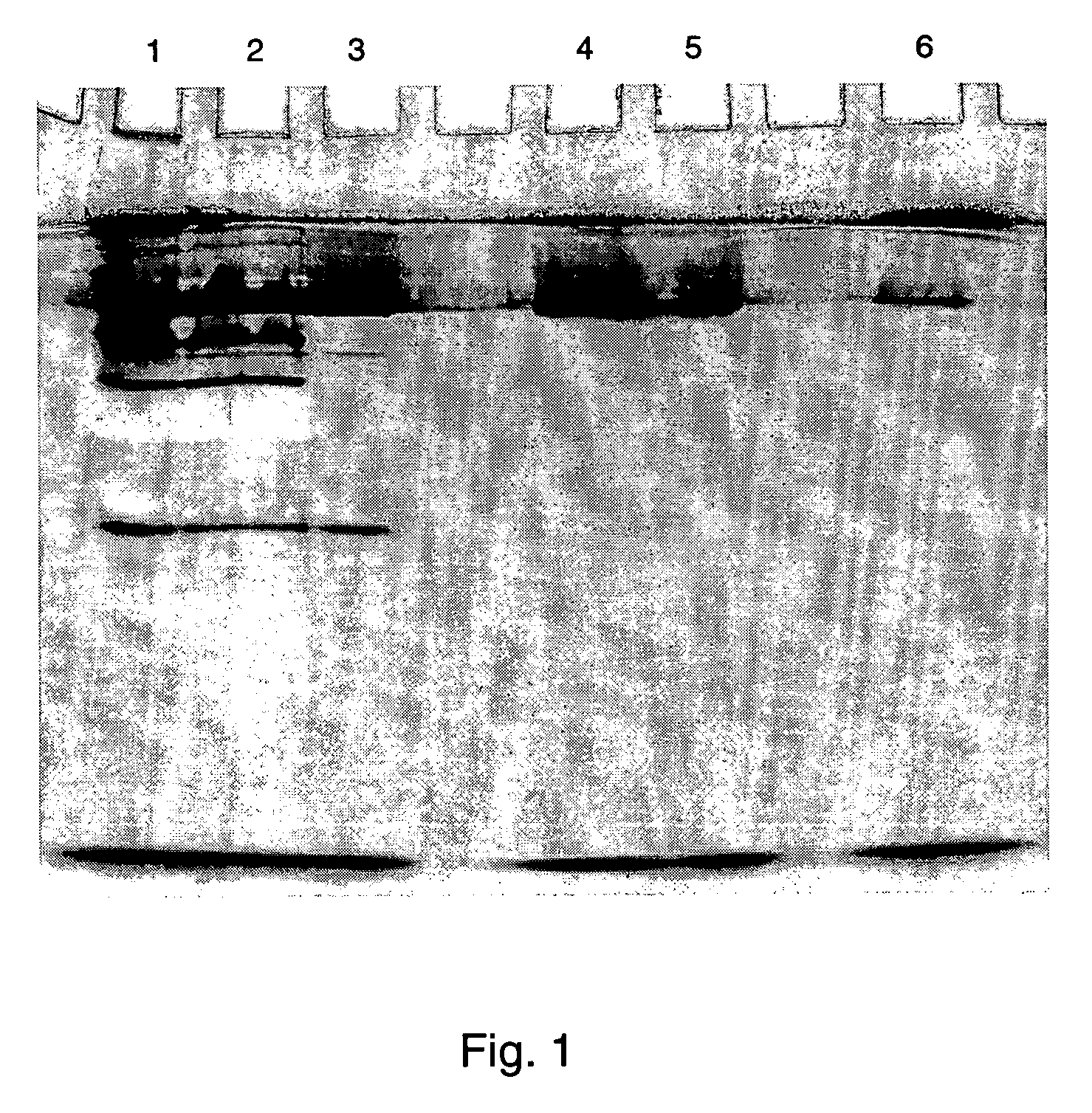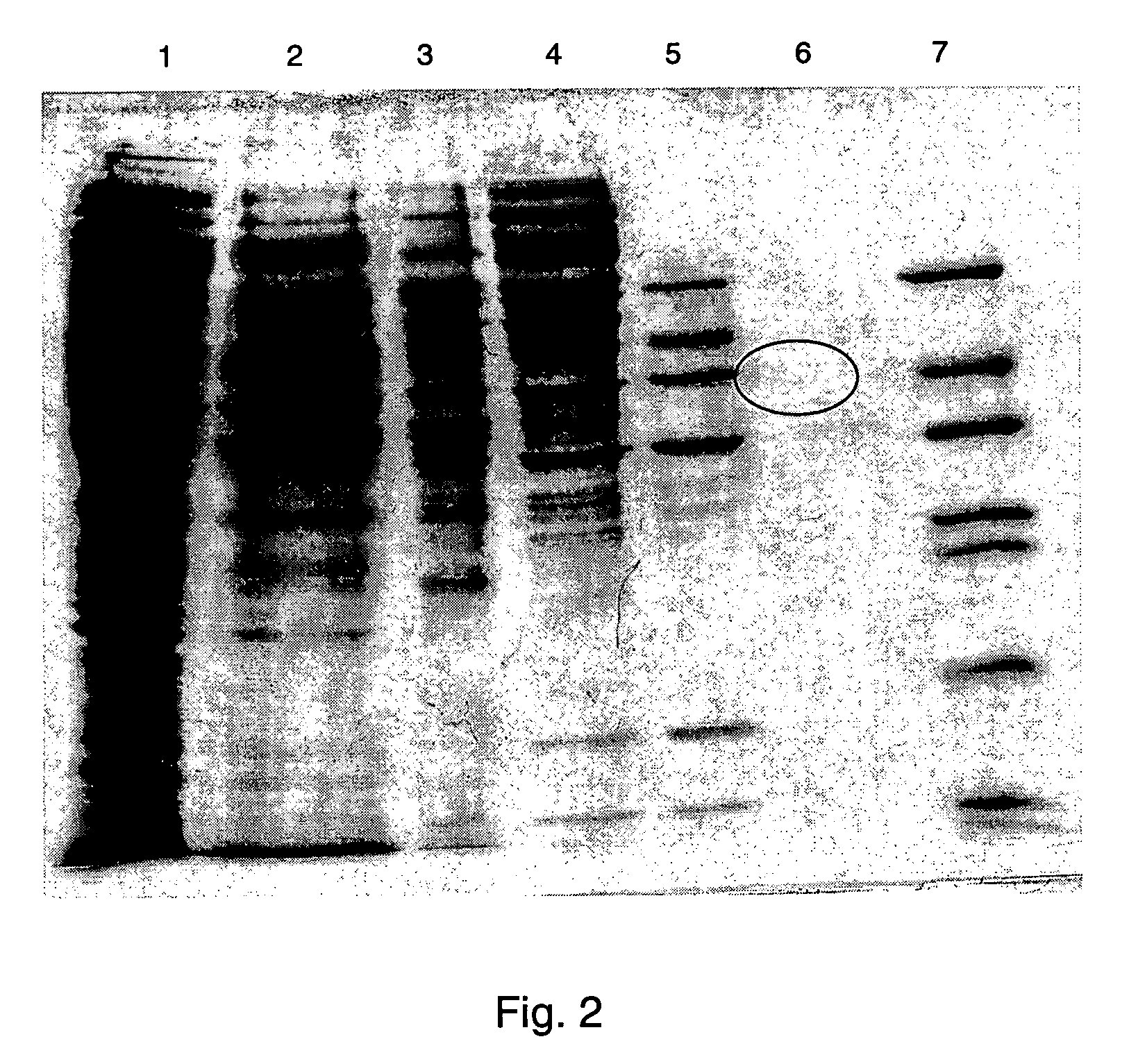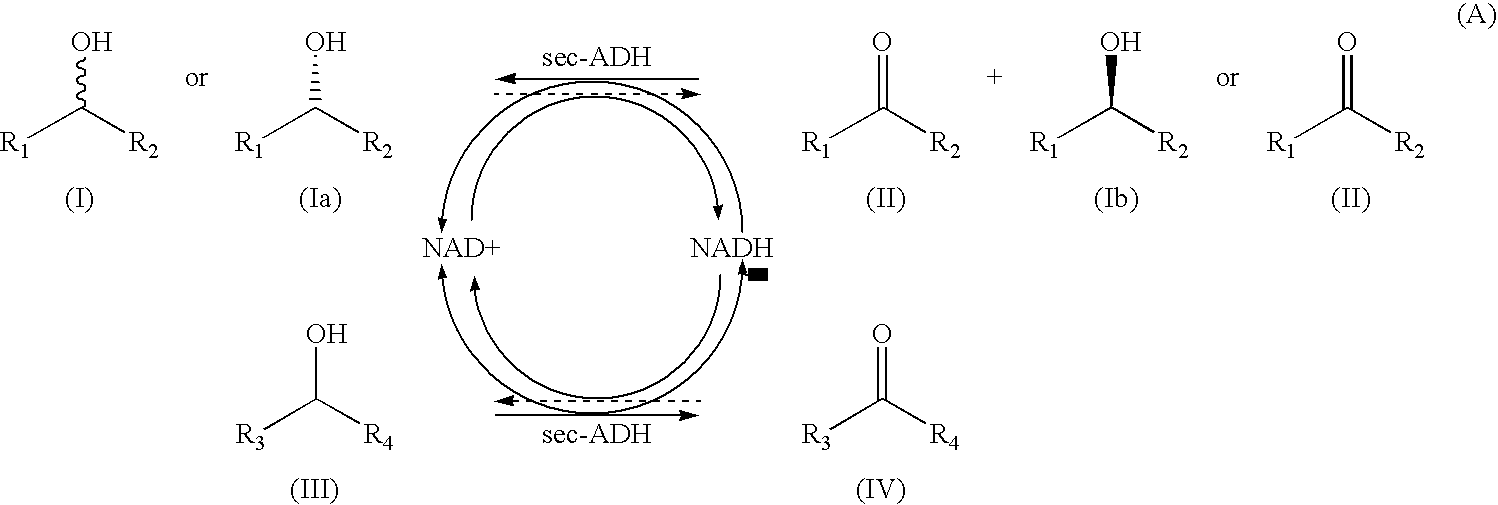Alcohol dehydrogenases with increased solvent and temperature stability
a technology of alcohol dehydrogenase and solvent, which is applied in the field of alcohol dehydrogenase with increased solvent and temperature stability, can solve the problems of difficult recycling of these substrates, difficulty in redox process on the basis of isolated alcohol dehydrogenase, and unfavorable aldol-type side reactions, etc., and achieves high operational stability of catalytic activity, high temperature stability, and long storage stability
- Summary
- Abstract
- Description
- Claims
- Application Information
AI Technical Summary
Benefits of technology
Problems solved by technology
Method used
Image
Examples
example 1
Cultivation of Rhodococcus ruber DSM 14855
[0138]The Gram-positive bacterium Rhodococcus ruber DSM 14855 is grown under aerobic conditions in baffled Erlenmeyer flasks at 30° C. and 130 rpm using a complex medium containing yeast extract, peptone, glucose and mineral salts (10 g / l yeast extract (OXOID CM129, OXOID Ltd., Hampshire, England), 10 g / l peptone, 2 g / l NaCl, 0.15 g / l MgSO4.7H2O, 1.3 g / l NaH2PO4, 4.4 g / l K2HPO4) for three days. Cell growth is followed by determination of the optical density via absorption at 546 nm, see Table 1. After a centrifugation (2000 g, 20 min), the pellet is taken up in Tris-HCl buffer pH 7.5 (50 mM), shock-frozen in liquid nitrogen and lyophilised.
[0139]The cells produce several NAD+ / NADH-dependent sec-alcohol dehydrogenases without any induction. The highest sec-alcohol dehydrogenase activity is displayed during the late exponential and early stationary phase of the growth curve (see table 1). The activity is measured as the ability of the cells to...
example 2
Purification of a sec-Alcohol dehydrogenase ‘ADH-A’ from Rhodococcus ruber DSM 14855
[0142]a) Cell Disruption
[0143]Bearing in mind that the sec-alcohol dehydrogenase might be a membrane-associated or even membrane-bound protein, cell disruption using a Vibrogen cell mill (glass beads, diameter 0.25 mm, Vibrogen Zellmühle, E. Bühler, Typ VI-4; Braun Biotech Int., Melsungen, Germany) is used and optimised in order to obtain the majority of the activity in the cell-free lysate and not in the cell debris fraction. This results in an exceptionally long and rough procedure of 7 shaking cycles of 2 min agitation / 5 min cooling each. The enzyme shows high stability against this strong mechanical treatment. The buffer used for cell disruption is 10 mM Tris-HCl buffer, pH 7.5.
[0144]
TABLE 2Optimization of the cell disruptionby increasing number of shaking cyclesRelative4860718582971009382Activity[%]Number123456789ofshakingcycles
[0145]b) Pre-Treatment with DEAE-Cellulose:
[0146]Due to the harsh br...
example 3
Purification Control and Molecular Weight Determination by Gel Electrophoresis
[0177]The progress of the protein purification is controlled by native as well as by SDS-polyacrylamide gel electrophoresis (PAGE). For both methods, the protein fractions are subjected to a Laemmli SDS-PAGE system using a MINI-PROTEAN II dual slab cell (BioRad).
a) Native Gel Electrophoresis
[0178]Active fractions are treated with non-denaturing sample buffer and loaded on a polyacrylamide gel (12%) without SDS. The gel is run at 4° C. at 150 V with running buffer containing 15 g / l Tris and 72 g / l Glycine. The method for visualization of sec-alcohol dehydrogenases in polyacrylamide gels was first reported by Grell et al. [see Science 149, 80 (1965)] and is based on a staining solution [see Dodgson et al., Biochem. J. 187, 703 (1996)] mixed from aqueous 4 mM 2-octanol (or any aliphatic, long-chained sec-alcohol accepted as substrate) and 100 mM Tris-HCl buffer pH 8.5 containing 3 g / l NAD+, 0.1 g / l phenazinem...
PUM
| Property | Measurement | Unit |
|---|---|---|
| pH | aaaaa | aaaaa |
| pH | aaaaa | aaaaa |
| Molecular weight | aaaaa | aaaaa |
Abstract
Description
Claims
Application Information
 Login to View More
Login to View More - R&D
- Intellectual Property
- Life Sciences
- Materials
- Tech Scout
- Unparalleled Data Quality
- Higher Quality Content
- 60% Fewer Hallucinations
Browse by: Latest US Patents, China's latest patents, Technical Efficacy Thesaurus, Application Domain, Technology Topic, Popular Technical Reports.
© 2025 PatSnap. All rights reserved.Legal|Privacy policy|Modern Slavery Act Transparency Statement|Sitemap|About US| Contact US: help@patsnap.com



